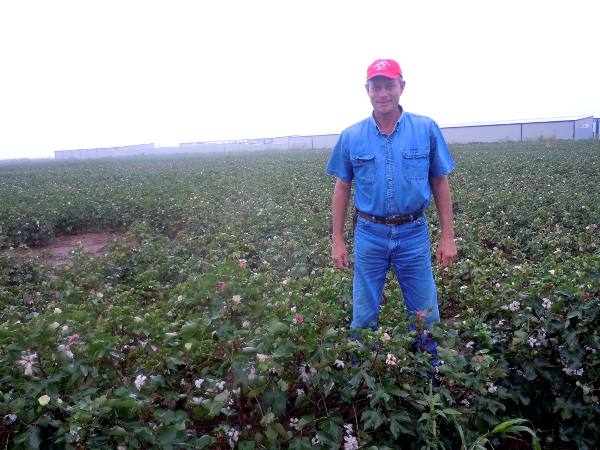October 12, 2012

Oklahoma's 2012 cotton crop offers a much more optimistic outcome than last year’s drought-ravaged crop.
John Osborn, who farms near Tuttle, southwest of Oklahoma City, believes his dryland cotton crop will average 300 pounds of lint cotton per acre.
Osborn is typical of cotton farmers who quit farming the crop in the late 1980s due to the depredations of the boll weevil. Positive results of the national boll weevil eradication program led him back to cotton in 2006.
"We struggled with drought in our wheat in 2006," Osborn said. "Knowing about the results of efforts to get rid of the boll weevil led us to get back in the game. Also, the new Roundup Ready cotton varieties allowing better weed control helped make up our minds to plant cotton again."
In 2011, Osborn only harvested 300 acres of his total cotton crop. Dry weather during the summer months cut back promising yields, but he sees more acreage being harvested this year.
Osborn's no-till farming practices enable him to take advantage of what moisture falls on his fields, he believes. He plants winter in wheat in the fall, between the cotton stalks in his fields, and kills the wheat in mid-March in order to have cover for the young cotton planted later in the spring. "The wheat provides good protection against wind and blowing sand for young cotton plants in the spring," he said.
Much of Osborn's farmland is a sandy loam on the south side of the Canadian River which flows past Oklahoma City.
Osborn planted PhytoGen 499 and All-Tex Apex varieties this year. The crop is in various stages of maturity with some cotton already opening and green bolls present in the same fields. "We will apply a boll opener in a couple of weeks," he said.
He gins at the Bi-State Cotton Producers Cooperative gin in Minco.
Along with cotton, Osborn farms winter wheat and alfalfa. He puts stocker calves on his wheat when the wheat and cattle market are right.
Cotton has been a good addition to the mix. "Cotton is a good crop for us," he said. "It does well under dryland conditions with just a little rain and normal heat. It is a good money crop for us."
The Osborn family also has a commercial herd of Angus cattle.
Osborn and his wife, Karen, are graduates of Oklahoma State University. He earned a degree in agricultural economics and his wife has a degree in construction management. Osborn's father, Dr. James Osborn, was head of the OSU Department of Agricultural Economics. After retiring from that position in 1996, he served as director of the OSU DASNR international studies program.
Now retired, James Osborn lives in Tuttle near his son and his family. He and his wife grew up on farms near Tuttle.
John and Karen have three sons. Kyle, the oldest, is a sophomore at Cornell University in New York State. Majoring in agricultural science, he is a member of the Cornell football team.
The other two sons are Kevin and Jason.
NTOK Cotton is a cotton industry partnership which supports and encourages increased cotton production in the North Texas, Oklahoma and Kansas Rolling Plains. For more information on the cotton scene, see ntokcotton.org and okiecotton.org.
You May Also Like




